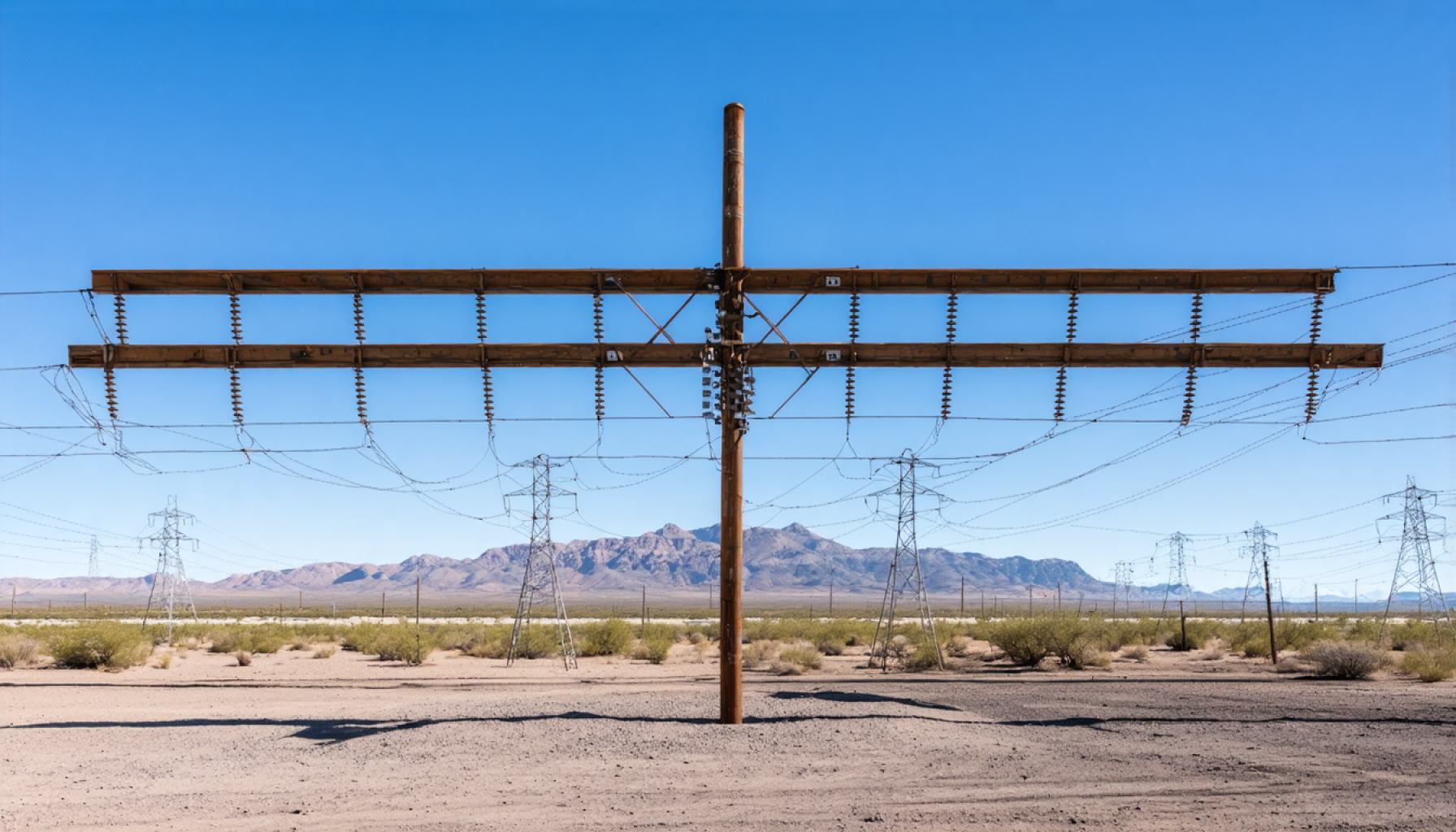- The Justice Energy Storage facility in Maricopa County, led by Strata Clean Energy, is set to enhance Arizona’s power grid with a 150 MW / 600 MWh capacity.
- Scheduled for completion by April 2026, it will provide energy to approximately 24,000 homes, utilizing excess daytime solar power for evening demand.
- Arizona’s harsh summers highlight the facility’s role in ensuring homes and businesses stay cool by harnessing surplus renewable energy.
- This project supports Arizona’s decarbonization goals, embodying a commitment to a cleaner future.
- A 20-year agreement with Arizona Public Service (APS) emphasizes a balanced energy portfolio that ensures reliability and affordability.
- Justice represents a significant step in sustainable energy, aiming to secure Arizona’s place in the clean energy revolution.
Nestled in Maricopa County, the desert landscape welcomes a technological marvel poised to redefine Arizona’s energy future. The Justice Energy Storage facility, spearheaded by Strata Clean Energy, promises to inject a vibrant pulse into the state’s power grid. As the ceremonial shovels broke ground, enthusiasm and purpose were palpable among the assembled executives and community stakeholders.
With a formidable capacity of 150 MW / 600 MWh, this ambitious project stands as a testament to innovation and foresight. Its promise? To harness the relentless Arizona sun and breathe life into homes when the day winds down. By April 2026, Justice aims to channel enough energy to power approximately 24,000 homes, transforming excess daytime energy into a reliable evening staple.
The scorching summers of Arizona are notorious, and as cities like Phoenix brace for scorching heatwaves, Justice emerges as a lifeline. It will skillfully capture surplus renewable energy and unleash it during critical evening hours, ensuring homes remain cool and businesses humming despite the sun’s fiery reign.
This venture is more than just concrete and circuitry; it embodies a commitment to a brighter, cleaner tomorrow. Tiago Sabino Dias from Strata Clean Energy painted a vivid picture of resilience and economic vitality fostered by this technological titan. It is not merely a storage facility; Justice is a leap toward statewide decarbonization goals.
In collaboration with Arizona Public Service (APS), this project is a strategic piece in a comprehensive energy tapestry. With a 20-year tolling agreement in place, APS and Strata are crafting a future where reliability meets affordability. Brian Cole from APS illuminated their vision of a balanced energy portfolio that anticipates growth and change, ensuring that the needs of Arizona’s ever-evolving landscape are met with confidence.
The Justice Energy Storage facility, born from APS’s All-Source RFP, signifies more than a technical triumph. It signals a profound commitment to sustainable progress, where cutting-edge solutions sculpt a path to energy security. As the world watches, Arizona plants its flag firmly at the forefront of the clean energy revolution. The takeaway? Justice is not just a battery; it’s a beacon of hope for a sustainable, sun-powered future.
Revolutionizing Power: How Arizona’s Justice Energy Storage Is Shaping a Green Future
What You Need to Know About Arizona’s Justice Energy Storage Facility
Arizona’s Justice Energy Storage facility, led by Strata Clean Energy, is setting the stage for a pivotal transformation in renewable energy storage and sustainability. With its strategic integration into Arizona’s power landscape, this facility stands as an innovative monument in the quest for a greener future.
Key Features and Specifications
– Capacity: The Justice Energy Storage facility boasts an impressive 150 MW / 600 MWh capacity. This means it can store and dispatch significant amounts of energy, making it one of the most substantial storage projects in the region.
– Power Output: By 2026, the facility aims to supply power to approximately 24,000 homes. This is achieved by storing excess solar energy generated during the day and releasing it during peak evening hours.
– Technology: Utilizing advanced battery storage technology, Justice captures surplus renewable energy—particularly solar—and optimizes its release when it’s most urgently needed.
The Role of APS and Strata Clean Energy
In collaboration with Arizona Public Service (APS), the Justice project is a significant strategic initiative in meeting growing energy demands and advancing sustainable energy development. With a 20-year tolling agreement, APS ensures the facility’s operations are seamlessly integrated into Arizona’s energy system, balancing both economic and environmental priorities.
Addressing Energy Challenges
– Meeting Peak Demand: Arizona’s notorious summers demand reliable power solutions. Justice captures surplus solar energy during the day and releases it in the evening, aiding in maintaining cool temperatures indoors despite the relentless heat.
– Decarbonization Goals: The facility aligns with state-wide decarbonization efforts. It not just augments the existing energy infrastructure but also propels Arizona towards reducing its carbon footprint.
Emerging Trends in Energy Storage
1. Increased Adoption: Energy storage solutions like Justice are gaining momentum across the U.S. as states seek resilient, renewable power alternatives.
2. Technological Advancements: Ongoing innovations in battery technology promise to boost efficiency and cost-effectiveness further.
3. Policy and Incentives: Policy shifts and incentive programs aid states and businesses in adopting such cutting-edge energy solutions more rapidly.
Pros and Cons Overview
Pros:
– Enhances grid reliability and stability.
– Supports the integration of renewable energy sources.
– Minimizes carbon emissions and promotes sustainability.
Cons:
– High initial setup costs and complexities in integration.
– Dependency on technology and operational management for consistent performance.
Real-World Use Cases
Beyond meeting residential energy needs, facilities like Justice provide a stable energy source for businesses, ensuring operational continuity even during peak periods. Additionally, they help stabilize grid fluctuations, proving invaluable during sudden surges in energy demand.
Actionable Recommendations
– Homeowners: Consider installing smart home devices to optimize energy consumption and take advantage of renewable energy discounts or incentives locally.
– Businesses: Invest in microgrid technology and collaboration with energy storage facilities to ensure continuous power supply.
– Policy Makers: Continue fostering partnerships and incentives for burgeoning clean energy technology to ensure sustainable growth.
Expand your understanding of Arizona’s clean energy advancements by visiting Arizona’s official website for more insights and updates.
